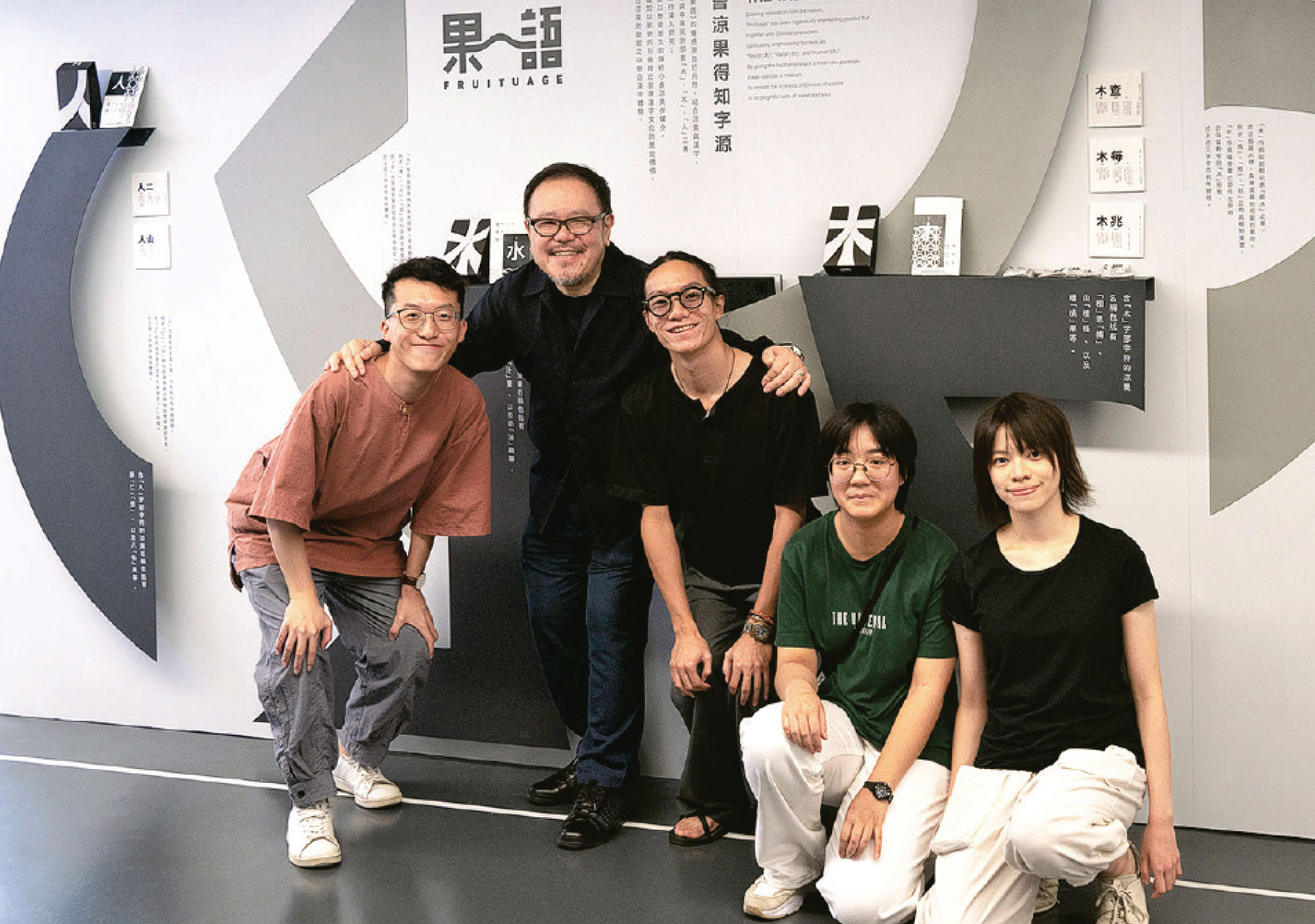Fruituage was born from the fascination with Hanzi and the desire to give traditional snacks a new identity. The team, Ray CHAN, Ian CHEUNG, Carol CHAN, and Belle LAM designed packaging that used Chinese radicals as a metaphor, making the learning of characters part of the snacking experience. The journey was filled with challenges, especially in merging cultural elements with product design, but regular feedback from PolyU mentors and the Material Resource Centre helped them stay focused.
Winning the 2024 Red Dot Design Award and being featured by media outlets was incredibly rewarding. Through this project, the team learned the value of research, collaboration, and creative risk-taking. Fruituage showed us how design can make culture accessible and engaging for everyone .

Mr. CHAN, Chak Ray
Mr. CHEUNG, Hoi Ho Ian
Ms. CHAN, Ka Lo Carol
Ms. LAM Hei Yin Belle
School of Design
The team demonstrates a deep understanding of semiotics by using packaging as a metaphor for Hanzi radicals. Main packaging represents the radical, while sub-packaging stands for the components. This approach shows how design can visually communicate abstract linguistic concepts, making them tangible and engaging for users.
The team required knowledge of Chinese typography, especially the structure and meaning of radicals like "Wood (木)", "Water (水)", and "Human (人)". Integrating these elements into packaging design not only celebrates Hanzi culture but also educates consumers, highlighting the power of design to bridge language and product identity.
The team focused on creating a strong brand identity by intertwining food, culture, and education. Through thoughtful design choices, Fruituage gives traditional snacks a fresh narrative, demonstrating how branding and storytelling can elevate a product and make it stand out in the market.
By designing sub-packaging that encourages consumers to learn about Chinese characters before eating, the team enhanced the user experience. This knowledge of interaction design ensures that packaging is not just functional, but also educational and immersive, engaging users beyond the product itself.
Collaboration with the Material Resource Centre and mentors provided insights into material selection, layout, and production processes. Understanding how to source materials, work with suppliers, and manage the logistics of packaging and exhibition is crucial for bringing a design concept to life effectively and professionally.
The team required a deep exploration into Hanzi culture, including the differences between phonogram and logogram systems. This skill involves gathering information, analyzing complex topics, and identifying unique elements—such as the role of radicals in Chinese characters—to inform creative solutions.
Blending food, culture, and education in packaging design was a unique challenge. The team had to find innovative ways to connect Chinese typography with fruit snacks, using packaging as a metaphor. Overcoming design obstacles and merging diverse concepts fostered creative thinking and adaptability.
Success depended on effective collaboration, from brainstorming ideas to dividing responsibilities like award enrollment and production. Regular meetings, mentorship, and support from tutors and the Material Resource Centre highlighted the importance of working together and leveraging each member’s strengths.
Clear communication was essential for sharing ideas, receiving feedback, and presenting the project to mentors, media, and award panels. Articulating design concepts and project motivations helped refine the work and ensured everyone was aligned throughout the process.
The team regularly reflected on their design motivations and project direction, guided by mentors who encouraged deeper thinking. Feedback and tutorials helped identify weaknesses and areas for growth, fostering a mindset of lifelong learning and ongoing self-improvement.
The pursuit of knowledge is a lifelong journey! To further expand your knowledge and continue your personal and professional growth. Click and explore the following learning resources:
Typography and Cultural Integration
Brand Identity and Storytelling
User Experience and Interaction Design
Material and Production Knowledge
Research and Information Literacy
Project Management and Teamwork